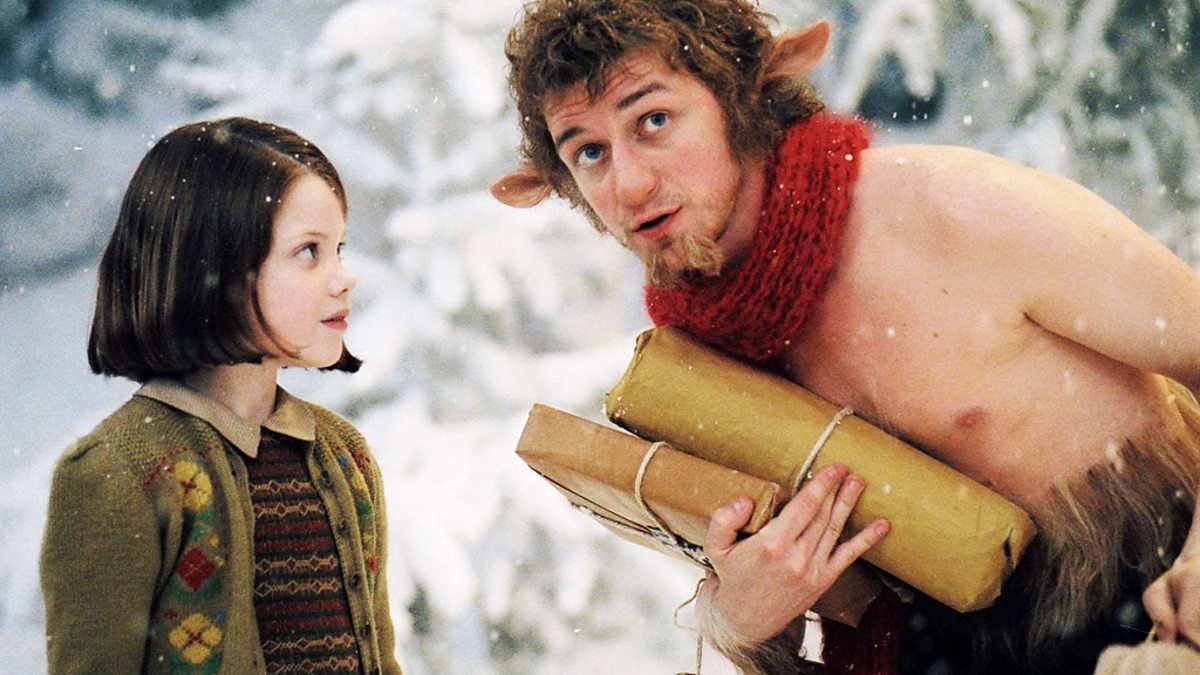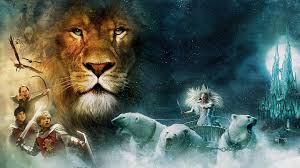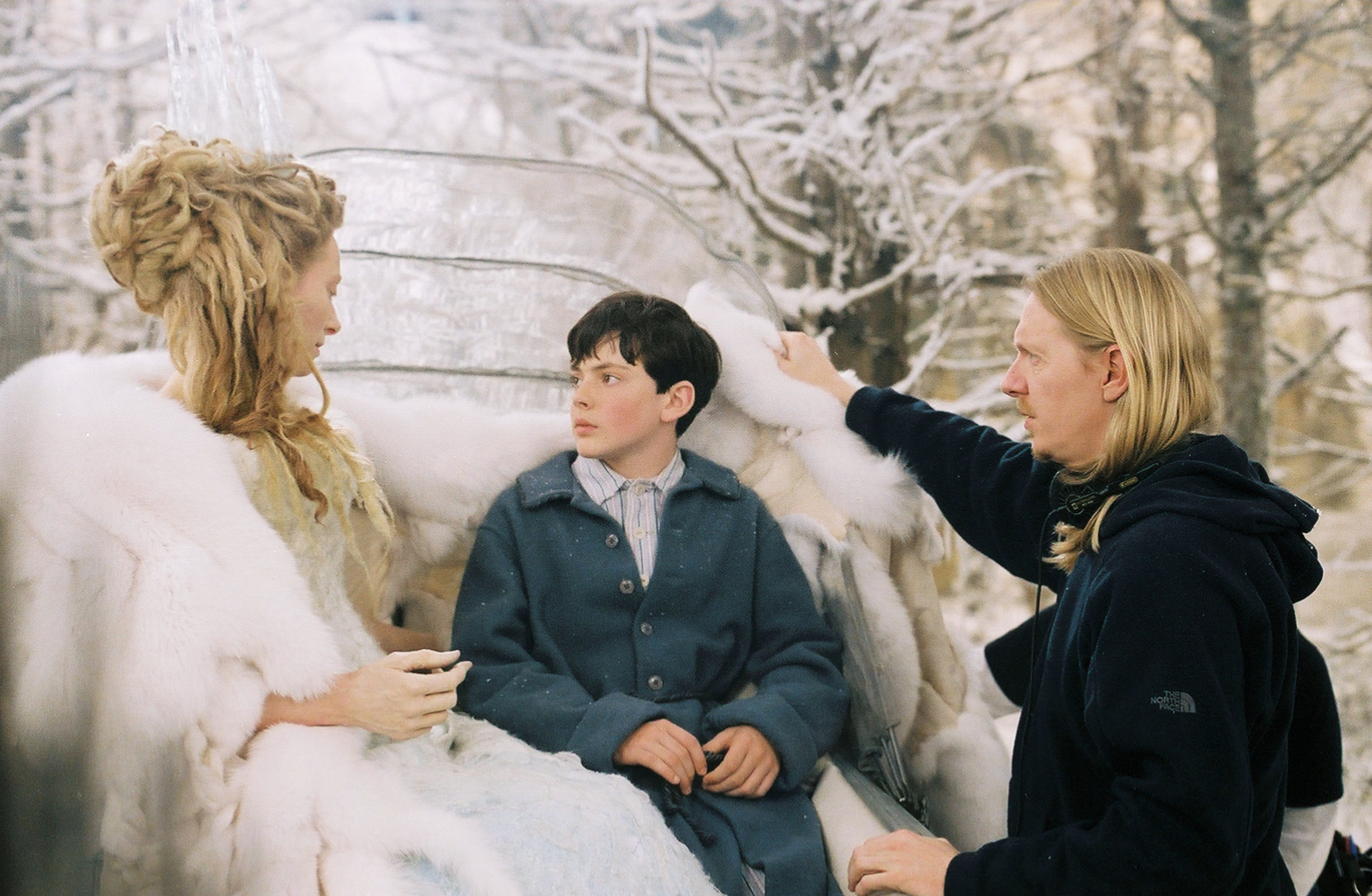The Chronicles of Narnia: The Lion, the Witch and the Wardrobe (2005)

The Chronicles of Narnia: The Lion, the Witch and the Wardrobe (2005) Review – A Magical Journey into a World of Wonder and Courage
The Chronicles of Narnia: The Lion, the Witch and the Wardrobe (2005), directed by Andrew Adamson, is an enchanting adaptation of C.S. Lewis’s beloved novel. The film brings to life the magical world of Narnia, filled with unforgettable creatures, breathtaking landscapes, and themes of courage, friendship, and sacrifice. With strong performances from its young cast, stunning visual effects, and a timeless story that has resonated with generations of readers, the film is a captivating experience for audiences of all ages. This review explores the film’s plot, performances, themes, and its lasting cultural impact.
Plot Summary
The film begins during World War II, when four siblings—Peter (William Moseley), Susan (Anna Popplewell), Edmund (Skandar Keynes), and Lucy (Georgie Henley)—are evacuated from London to the countryside. While exploring the home of an old professor, Lucy stumbles upon a magical wardrobe that leads to the land of Narnia. There, she meets the faun Mr. Tumnus (James McAvoy), who explains that Narnia is under the rule of the White Witch (Tilda Swinton), who has cast a spell that makes it always winter but never Christmas.
As the siblings venture further into Narnia, they are drawn into an epic struggle between good and evil, led by the majestic lion Aslan (Liam Neeson). Edmund, initially seduced by the White Witch’s promises of power, eventually joins his siblings in supporting Aslan, who is destined to defeat the Witch and restore peace to Narnia. The children’s journey through Narnia tests their bravery, loyalty, and belief in themselves as they fight to free the land from tyranny.
Themes and Symbolism
Good vs. Evil
At its heart, The Lion, the Witch and the Wardrobe is a classic tale of good versus evil. The White Witch represents cruelty and oppression, while Aslan embodies sacrifice, redemption, and love. The battle between these two forces unfolds on a grand scale, but the film also emphasizes the importance of personal choices, as each character must decide where their loyalty lies.
Courage and Sacrifice
The film highlights the theme of courage and the personal sacrifices that come with standing up for what is right. Aslan’s selfless act of sacrifice for Edmund is a powerful symbol of love and redemption, showing that true courage often requires putting others before oneself. The children also grow into their own courage, learning to face their fears and make difficult choices for the greater good.
Innocence and the Power of Belief
Narnia is a world that thrives on imagination and belief. The children’s ability to believe in Narnia’s magic and Aslan’s power is central to their growth and success. The film suggests that innocence and the willingness to believe in the impossible are essential in overcoming challenges and triumphing over adversity.
Performances
Georgie Henley as Lucy Pevensie
Georgie Henley delivers an outstanding performance as Lucy, the youngest and most optimistic of the siblings. Her portrayal of Lucy’s innocence and unwavering belief in the magic of Narnia is both heartwarming and genuine. Henley’s performance captures the heart of the film, making Lucy a character that audiences will root for from start to finish.
Skandar Keynes as Edmund Pevensie
Skandar Keynes brings depth to the role of Edmund, the character who initially falls under the White Witch’s spell but ultimately redeems himself. Keynes effectively portrays Edmund’s internal struggle, making his eventual transformation into a hero a believable and rewarding journey.
Tilda Swinton as the White Witch
Tilda Swinton’s portrayal of the White Witch is chilling and commanding. As the film’s primary antagonist, Swinton creates a character that is both regal and terrifying. Her cold, calculating nature makes her a formidable foe for Aslan and the children, and her performance is one of the standout aspects of the film.
Liam Neeson as Aslan
Liam Neeson brings a powerful and dignified presence to the role of Aslan, the noble lion. Neeson’s voice work imbues Aslan with wisdom, strength, and compassion, making him a compelling and inspiring figure. Aslan’s character is central to the film’s themes of sacrifice and redemption, and Neeson’s portrayal perfectly captures his gravitas.
Cinematography and Visual Style
The cinematography of The Lion, the Witch and the Wardrobe is breathtaking, with sweeping shots of the magical landscapes of Narnia, from the icy expanse ruled by the White Witch to the lush forests where Aslan’s forces prepare for battle. The visual effects are impressive, particularly in the creation of magical creatures like Mr. Tumnus and the talking beavers, as well as the majestic Aslan. The film beautifully captures the wonder of Narnia, creating a fully realized world that feels both fantastical and immersive.
Music and Sound Design
The film’s score, composed by Harry Gregson-Williams, is sweeping and epic, perfectly complementing the film’s grand fantasy elements. The music helps elevate the emotional beats of the story, from the quiet moments of reflection to the thrilling battle scenes. The soundtrack adds to the film’s sense of wonder and adventure, while also highlighting its more somber themes of sacrifice and redemption.

Cultural Impact and Reception
The Lion, the Witch and the Wardrobe was met with critical acclaim upon its release, becoming one of the highest-grossing films of 2005. It was praised for its faithful adaptation of C.S. Lewis’s beloved novel, as well as its captivating performances and stunning visual effects. The film’s success spawned two sequels, Prince Caspian (2008) and The Voyage of the Dawn Treader (2010), further expanding the cinematic portrayal of Narnia.
The film’s lasting cultural impact lies in its ability to capture the spirit of the original book while appealing to both children and adults. Its themes of courage, sacrifice, and the triumph of good over evil continue to resonate, making it a timeless classic in the fantasy genre.
Final Verdict
The Chronicles of Narnia: The Lion, the Witch and the Wardrobe (2005) is a magical and inspiring adaptation of C.S. Lewis’s beloved novel. With strong performances, stunning visuals, and timeless themes of good versus evil, the film captures the wonder and adventure of Narnia while delivering a powerful message of courage, redemption, and belief. Whether you’re a fan of the book or new to Narnia, this film is a must-watch for fantasy lovers.
For fans of epic fantasy films like The Lord of the Rings and Harry Potter, The Lion, the Witch and the Wardrobe offers a similarly immersive experience that will captivate audiences with its blend of magic, adventure, and heart.










